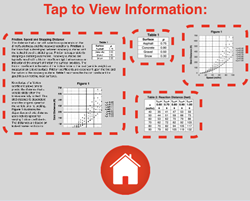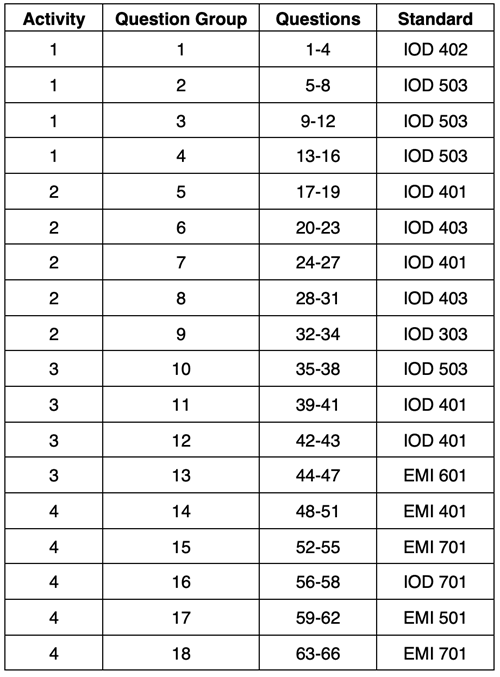About the Science Reasoning Center
 Highly Recommended
Highly RecommendedLike all our Science Reasoning Center activities, the completion of the Friction, Speed, and Stopping Distance activity requires that a student use provided information about a phenomenon, experiment, or data presentation to answer questions. This information is accessible by tapping on the small thumbnails found on the bottom right of every question. However, it may be considerably easier to have a printed copy of this information or to display the information in a separate browser window. You can access this information from this page.
The Standards
The Friction, Speed, and Stopping Distance activity describes the variables that affect that total stopping distance for a car skidding to a stop under a variety of roadway conditions. The effect of reaction time, friction coefficient, and initial speed are investigated. Questions target student's ability to interpret complex data presentations, to combine information from one data presentation with information from another data presentation, to interpolate and extrapolate from given information towards appropriate conclusions, and to investigate the effect of changes in one variable upon another variable.
Success with the activity requires some degree of understanding or proficiency with respect to ...
- Developing and Using Models (Science and Engineering Practice 2.6)
Develop and/or use a model (including mathematical and computational) to generate data to support explanations, predict phenomena, analyze systems, and/or solve problems. - Analyzing and Interpreting Data (Science and Engineering Practice 4.1)
Analyze data using tools, technologies, and/or models (e.g., computational, mathematical) in order to make valid and reliable scientific claims. - Using Mathematics and Computational Thinking (Science and Engineering Practice 5.3)
Use mathematical, computational, and/or algorithmic representations of phenomena or design solutions to describe and/or support claims and/or explanations. - Constructing Explanations and Designing Solutions (Science and Engineering Practice 6.1)
Make a quantitative and/or qualitative claim regarding the relationship between dependent and independent variables. - Scale, Proportion, and Quantity (Crosscutting Concept 3.2)
Algebraic thinking is used to examine scientific data and predict the effect of a change in one variable on another (e.g., linear growth vs. exponential growth). - Stability and Change (Crosscutting Concept 7.1)
Much of science deals with constructing explanations of how things change and how they remain stable.
While the Friction, Speed, and Stopping Distance activity addresses the four NextGen Science and Engineering Practices and the two Crosscutting Concepts above, the activity drew its greatest inspiration from ACT's College Readiness Standards for Science Reasoning. The activity consists of 66 questions organized into 18 Question Groups and spread across the four activities. Two of the three strands (Interpretation of Data - IOD; and Evaluation of Models, Inferences, and Experimental Results - EMI) of the College Readiness Standards are addressed in this activity. The code given for the standard includes three letters to indicate the strand and three numbers to indicate the specific standard within that strand. Higher numbers are indicative of more complex science reasoning skills. The relationship between the questions and the standards is as follows:

Complementary and Similar Resources
The following resources at The Physics Classroom website complement the Friction, Speed, and Stopping Distance Lab Science Reasoning Activity. Teachers may find them useful for supporting students and/or as components of lesson plans and unit plans.
Physics Video Tutorial, Newton's Laws: Friction
Physics Interactives, Newton's Laws: Force Simulation
The Calculator Pad, Newton's Laws: Problem Sets NL11 - NL13
Recommended: Print Passage, Tables, and Graphs
Also see: